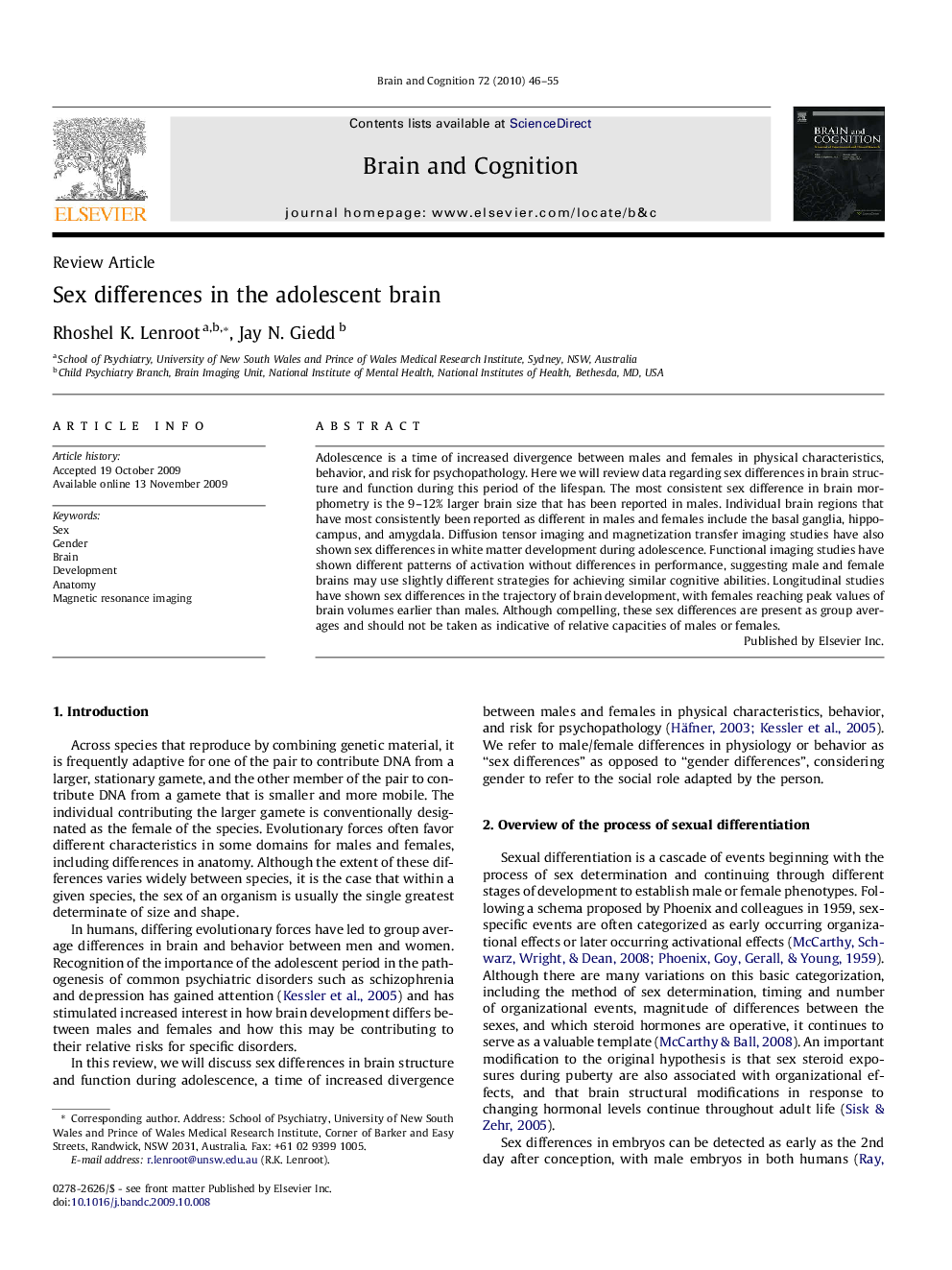| Article ID | Journal | Published Year | Pages | File Type |
|---|---|---|---|---|
| 924646 | Brain and Cognition | 2010 | 10 Pages |
Adolescence is a time of increased divergence between males and females in physical characteristics, behavior, and risk for psychopathology. Here we will review data regarding sex differences in brain structure and function during this period of the lifespan. The most consistent sex difference in brain morphometry is the 9–12% larger brain size that has been reported in males. Individual brain regions that have most consistently been reported as different in males and females include the basal ganglia, hippocampus, and amygdala. Diffusion tensor imaging and magnetization transfer imaging studies have also shown sex differences in white matter development during adolescence. Functional imaging studies have shown different patterns of activation without differences in performance, suggesting male and female brains may use slightly different strategies for achieving similar cognitive abilities. Longitudinal studies have shown sex differences in the trajectory of brain development, with females reaching peak values of brain volumes earlier than males. Although compelling, these sex differences are present as group averages and should not be taken as indicative of relative capacities of males or females.
